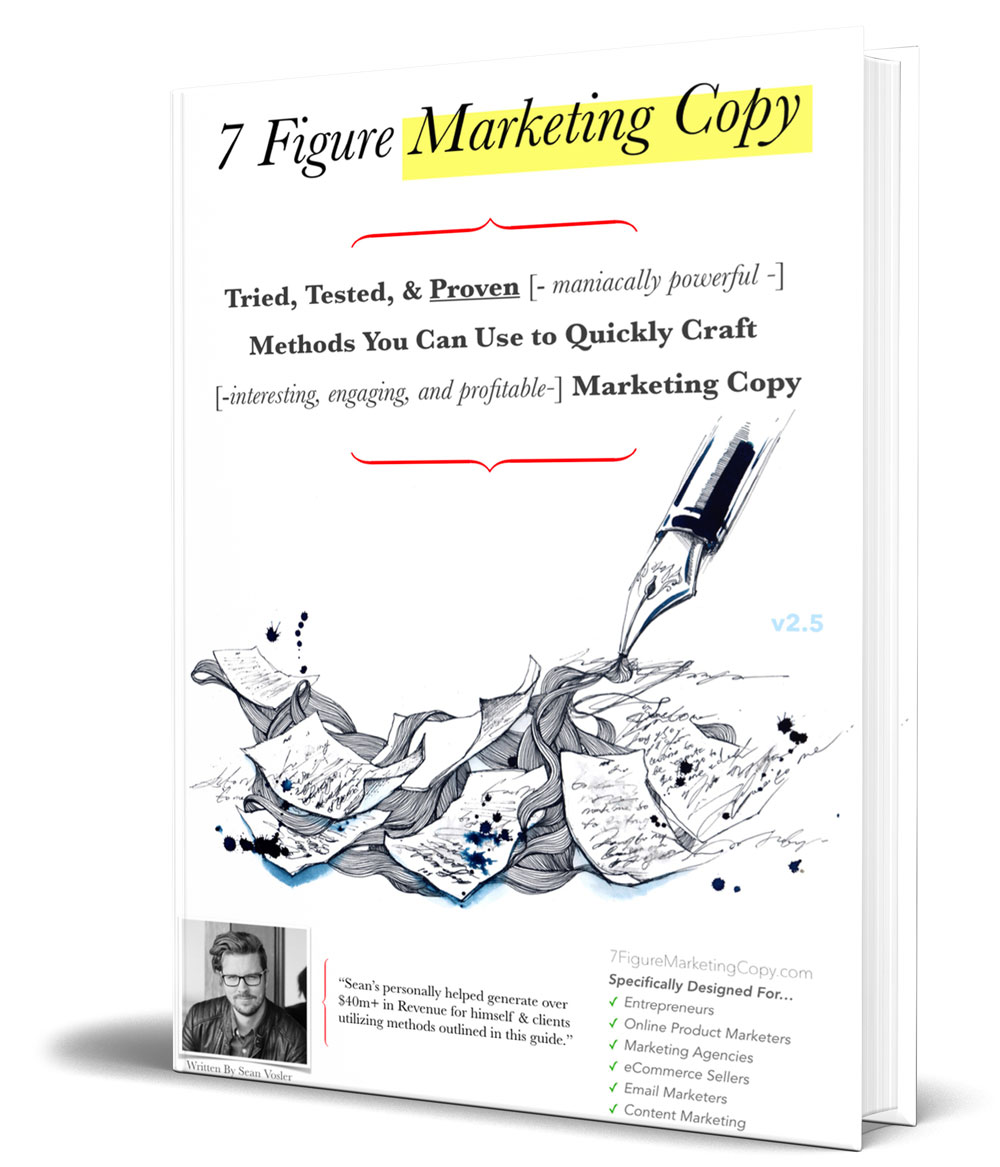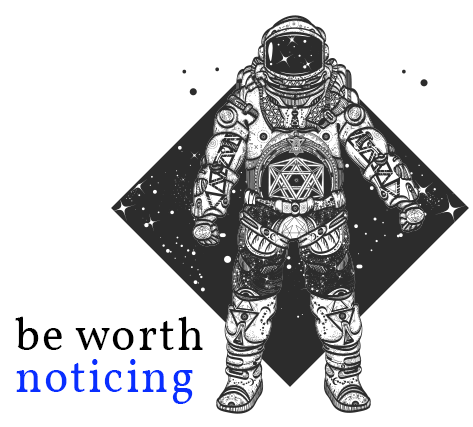Psychology of Sales – 5 Key Physiological Principles You Should Utilize When Selling Anything
A business without sales, well… that isn’t a business, it’s just an idea. Don’t just be a person with an idea, you have to learn how to generate that first idea to turn it into a real business. Today I’m going to walk you through the key marketing principles that took my ideas (and those of my clients) from zero sales to often times millions in sales. The tried and true principles that work for any industry and any product.
Some think selling is all about convincing people that you’re right and they’re wrong. That your way gets results, and everything else is a waste of time. That’s just part of the story. Closing sales isn’t just about changing peoples minds; it’s about understanding why people make decisions and leveraging that in our sales materials.
No matter how much technology changes, the following aspects of human psychology, that influence belief and action, will persist. If you want to master marketing and selling you must learn how to apply the following 5 psychological principles to your business.
Principle 1: Engage, Empathize and Listen
Top salespeople are often natural relationship builders. The power of building connection applies equally to a car salesperson on a lot, a telemarketer, or a copywriter for a website. A brand identity may substitute for an individual salesperson or business owner, but in either case the objective is to demonstrate a relatable, empathetic, and likable persona.
KEY: People don’t just buy with their minds (logic) but also with their emotions. Usually they make the emotional commitment to buy first and look for a logical reason to support that decision later.
You’re never only selling a product or service but also an experience. Here are some ways to help you engage more effectively with your customers and prospects.
- Empathy is powerful. Show the customer that you understand him or her. You can always start with the “I was in the same boat until I discovered this” approach. Show that you understand and sympathize with your customers’ needs, and help them see that you really do understand their situation.
- Listen, listen, listen! Don’t just lecture and pitch to your audience, ask them questions and engage with them. Especially with webinars, you can make participation a key part of the presentation. If it’s not a face to face conversation, such as an email or video, you can always raise hypothetical questions and discuss as if it’s from their perspective.
- Don’t be afraid of humor. The second verbal noise a baby makes (after crying) is laughing… It’s built deep into our humanity, and including humor in your sales pitch, copy, and presentations is one of the best ways to build connections. This can also lower people’s defenses by bringing a dash of humor to the situation.
- Demonstrate expertise. People buy from who they know, like, and trust, but those factors only go so far. You have to demonstrate that you KNOW what you’re talking about. You have to build up your authority. Draw upon your own experience or present compelling research that backs your claims. This can be done subtly, like dropping a short story of success into your materials, or it can be overt as using a customer testimonial or case study.
Real World Example From My Clients
Principle 2: Tap Into the Pleasure-Pain Principle
A significant portion of human behavior is explainable by the pleasure-pain principle. Humans do whatever they can to increase pleasure and avoid pain. Most products and services tap into one or even both of these needs. For example, ads for food are usually pleasure-oriented. Whether it’s pizza, sweets, burritos, or a soft drink, the focus of ads for these items is not only their great taste but associating them with fun and socializing.
Insurance is at the other end of the spectrum. People don’t buy insurance because they want to have fun but to avoid loss. In the case of home or auto insurance, they want to protect their possessions. With life insurance, they want to be sure their loved ones are taken care of after they die.
When companies sell cars, travel packages, clothing, or home decor, they’re “selling” pleasure in one form or another. When they sell medical devices, home remedies, survivalist/prepper gear, or tax services, they’re almost always telling customers how to avoid or reduce pain.
Keep in mind that you sometimes want to appeal to both people’s desire to avoid pain and experience pleasure. With a diet pill or exercise program, for example, you’re addressing the pain or social discomfort of being overweight. At the same time, you’re asking customers to envision how great they’ll look and feel after losing weight. If you want to make your product or service compelling, make sure you’re appealing to at least one end of the pleasure-pain spectrum.
Real World Example From My Clients
Principle 3: Social Proof is More Than Reviews
Social proof is a psychological principle that’s gotten more than its share of attention lately as businesses focus on getting online positive reviews. Ratings and reviews are indeed a powerful way to display social proof, but they’re far from the only means. If you want to understand this, it’s useful to explore the underlying psychological mechanism that makes people want to follow others.
When businesses think about reviews, they often focus on the idea that positive reviews announce how great a product or company is. It’s certainly beneficial when a reviewer, for example, says something like “The best pizza I ever had!” or “The scariest novel since Stephen King!” However, reviews touting the greatness of a product are just the tip of the iceberg when it comes to social proof.
The essential point to understand is that people are hardwired to follow the crowd even when doing so is irrational. People are more likely to line up at a popular restaurant than sit down at an empty one. Similarly, busy booths at trade shows attract even more traffic while deserted ones have trouble getting any attention. In such cases, the more popular choice isn’t necessarily the better one. It’s another example of people using emotion to justify logic.
Psychologist Robert Cialdini wanted to identify the best way to protect the environment at Arizona’s Petrified Forest National Park by preventing visitors from stealing valuable petrified wood from the area. A prominent sign revealed that people removed about 14 tons of wood per year and this practice was harming the environment. While the sign was meant to discourage the theft of wood, Cialdini found that the opposite was true. When the park removed the signs, fewer people took wood. It turns out, people are inclined to do what others are doing even if it’s morally wrong.
Hopefully, your goal is not to encourage people to make bad or unethical decisions. However, you can still tap into the power of social proof by appealing to the powerful tendency to follow the crowd. Here are some examples of how to use social proof…
- Display how many customers, subscribers, users, visitors, or followers you have.
- Display real-time data. Showing how many people are buying a product, booking a hotel, ordering a free sample or taking another action.
- Reveal statistics that show how widespread a specific behavior is. That is a good option if you’re in a vast industry and your particular product is not yet widespread or well-known. That lets you include customers into a broader category such as dieters, vacationers, insurance-buyers, pet owners, or drivers.
- Avoid negative social proof. The above example of people stealing wood is an example of this. Don’t talk about how many people don’t exercise, eat healthy foods, start new businesses or anything else that you’re trying to convince them to do… Unless you make it crystal clear why following the crowed is the wrong way, and demonstrate the power of ‘a new direction’.
- Find as many creative ways to leverage the idea of social proof as possible.
Real World Example From My Clients
4. Tap Into Authority With Influencer Marketing
The principle of authority is related to social proof. It’s always great if you can demonstrate expertise and authority regarding your industry. It’s also beneficial if you can use social evidence to illustrate how many people believe in your products. However, sometimes you can borrow authority from someone else such as a respected expert or celebrity.
Getting an influencer to vouch for your product or business can be a quick way to gain credibility, especially if they have positive results.
Whether it’s rational or not, a recognized authority or celebrity has more clout that an “ordinary” person. That’s why it’s beneficial to have someone with a large Instagram following take over your account for a day or give you a shoutout, or why big brands hire celebrities that their customers like.
One reason this works is that people often don’t have time to do their own research, so they like to rely on experts or thought leaders to tell them what to think or buy. A recognized authority in your industry lends credibility to your product. Celebrities, even when they’re not genuine experts, carry their own type of authority just by their popularity.
Real World Example From My Clients
5. Scarcity Increases Perceived Value
Another time-tested psychological trigger that’s just as valid today as ever before is scarcity, a principle built into the fabric of the economy. When an item is scarce, prices rise; when it’s plentiful, prices fall. No matter what you’re selling, it’s crucial to create the impression that supplies are low, the price is about to rise, the offer will soon expire, or that inaction will have negative conscienceless.
When people think they have all the time in the world to make up their minds, they tend to procrastinate. In an increasingly distracted world you can’t afford to have people put your email aside for later consideration or leave your website with the intention of returning later. In all likelihood, you either make the sale right away or never.
When appealing to scarcity, do yourself a favor and be honest. If you try to engage in false shortage, such as by putting fake timers on your website, you may pick up a few sales, but you’ll lose credibility in the long run. There are enough ways to generate a sense of urgency honestly, without resorting to deception. Here are a few ways to take advantage of the scarcity principle.
• Seasonal and holiday sales.
• Release limited-supply items, or limited capacity services.
• Offer discounts to the first 100 (or 10 or 1,000) buyers.
• Create a hard deadline for selling a product and stick to it. You can always re-release it again in the future.
These five psychology sales strategies will help unlock your company’s potential. You know you have a great product or service, the missing piece is usually how you communicate it’s value. While it’s necessary to explain your product’s features and benefits, you must also appeal to your customers’ subconscious needs.
References
- forbes.com/sites/heathermorgan/2018/02/26/the-key-to-asking-better-sales-questions-is-empathy-according-to-harvards-mark-roberge/#6b8463d1558b
- psychologytoday.com/us/blog/after-service/201705/the-science-behind-why-people-follow-the-crowd
- blog.hubspot.com/marketing/the-scarcity-principle



 Let me send you a boatload of copywriting tips...
Let me send you a boatload of copywriting tips...